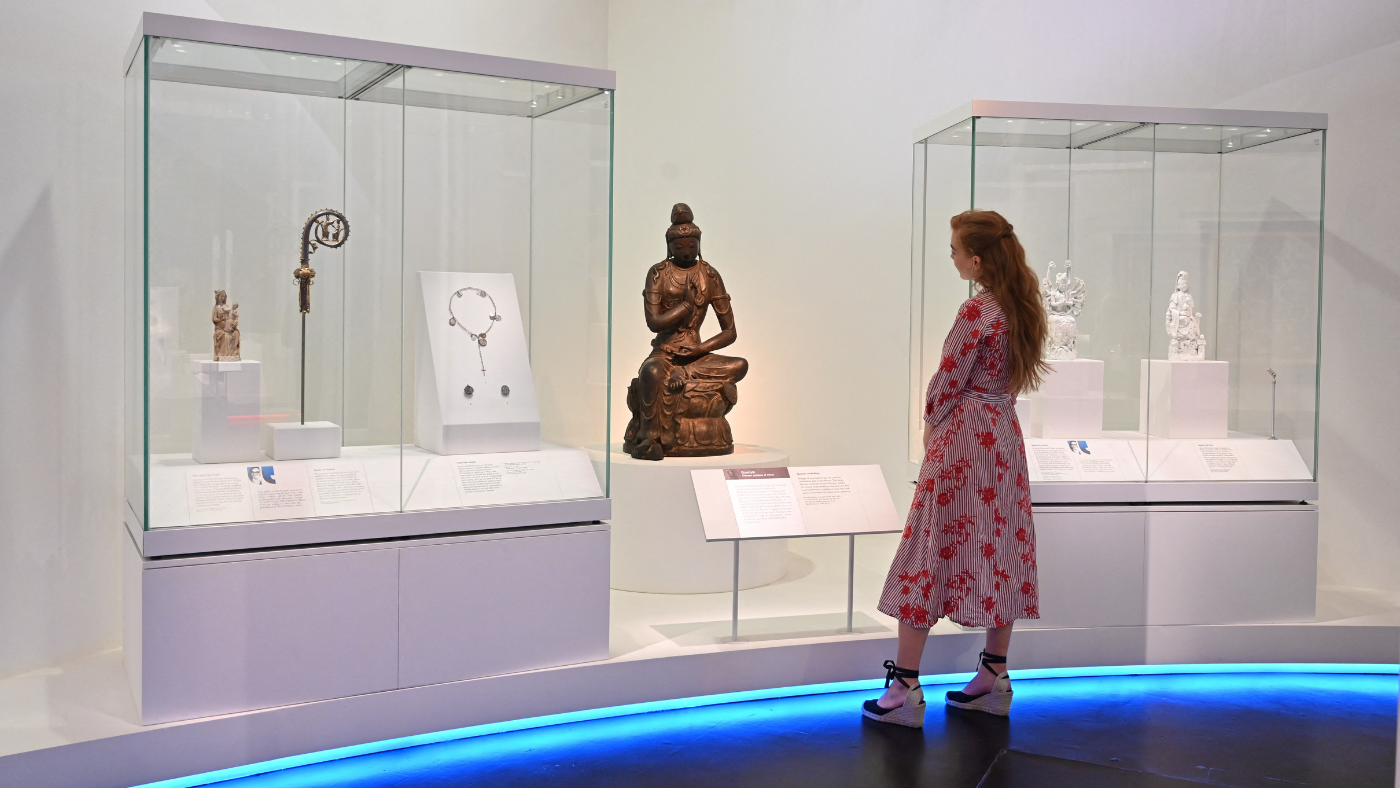Feminine Power: the divine to the demonic
This exhibition’s vast theme sees feminist readings ‘thrust’ onto ‘unruly ancient art’

The British Museum’s Feminine Power brings together “an exhilarating array of goddesses, sorceresses and demonesses from living religions as varied as Tibetan Buddhism and Wicca, jostling side by side with cult objects from antiquity all over the globe”, said Marina Warner in The Guardian.
It’s the latest in a “splendid” line of exhibitions that use the British Museum’s vast holdings to explore the role of the sacred in different societies – in this case, examining the ways in which women have been idolised, vilified, objectified and worshipped through the ages.
You can see Cycladic clay figurines from around 3000BC, probably representing a mother goddess, and an Egyptian amulet from 1400BC that symbolises the blood of Isis. Nearby, there’s a video following a Vodun-like ceremony in contemporary Nigeria “in honour of Oshun, the Yoruba goddess of fresh water and healing”. The show is a “treasure store of fascinating artefacts, thoughtfully chosen and arranged”, which offers to “reconnect us to the volcanic energy of goddess cults the world over”.
The Week
Escape your echo chamber. Get the facts behind the news, plus analysis from multiple perspectives.

Sign up for The Week's Free Newsletters
From our morning news briefing to a weekly Good News Newsletter, get the best of The Week delivered directly to your inbox.
From our morning news briefing to a weekly Good News Newsletter, get the best of The Week delivered directly to your inbox.
There’s certainly no shortage of “intriguing” exhibits here, said Waldemar Januszczak in The Sunday Times. A section devoted to the role of feminine deities in “the world’s many origin myths” gives us a “beautiful”, red-hued carving of the Hawaiian goddess Pele, said “to be responsible for the eruption of volcanoes”; and a shiny brass plate showing Mami Wata, the African river goddess, “woman on top, fish below”. In the section about female sexual power, a “tiny” Roman cameo from about 200BC carries possibly the oldest known image of Adam and Eve being tempted by the snake.
Unfortunately, however, the wondrous artefacts here are not allowed to speak for themselves. Instead, the curators attempt to rationalise their argument from a modern viewpoint, offering revisionist captions that “thrust feminist readings onto unruly ancient art”. It feels “more like projection than scholarship”, and the effect is “shrill and preachy”.
On large video screens, contemporary female thinkers including classicist Mary Beard and playwright Bonnie Greer tell us what to think; they can be heard in “every corner of the show”, making it “genuinely difficult to concentrate on the art”. It is decidedly annoying.
The assorted experts do provide some relevant and thoughtprovoking context for the exhibits, said Lucy Davies in The Daily Telegraph. Beard, for instance, gives unexpected nuance to a “glowing” marble Venus from AD100-150, explaining that the goddess was “an icon of military endeavour as well as love”; when Roman soldiers marched on Londinium, she tells us, “they did so with coins depicting her image jangling in their tunic pockets”.
A free daily email with the biggest news stories of the day – and the best features from TheWeek.com
Yet the show’s theme is so vast that it’s hard to take it all in: one moment, we’re learning about Medusa, Circe and the changing perceptions of the goddess Hecate, variously presented as “beautiful and independent” and “aggressively sexual”. Next come “Lakshmi, Hathor, the Virgin Mary, Guanyin, Ishtar and Rangda”. After a while, the barrage of cross-cultural information starts to become “head-spinning”. There is scarcely a dull moment in this compendium of “tremendous” objects: “but unless you happen to be in possession of divine powers yourself, you may struggle to digest it”.
British Museum, London WC1 (020-7323 8000, britishmuseum.org). Until 25 September.
-
 The Week’s big New Year’s Day quiz 2026
The Week’s big New Year’s Day quiz 2026Quiz of the Year How much do you remember about 2025’s headlines? Put yourself to the test with our bumper quiz of the year
-
 Is tanking ruining sports?
Is tanking ruining sports?Today's Big Question The NBA and the NFL want teams to compete to win. What happens if they decide not to?
-
 ‘Netflix needs to not just swallow HBO but also emulate it’
‘Netflix needs to not just swallow HBO but also emulate it’instant opinion Opinion, comment and editorials of the day
-
 The best food books of 2025
The best food books of 2025The Week Recommends From mouthwatering recipes to insightful essays, these colourful books will both inspire and entertain
-
 Art that made the news in 2025
Art that made the news in 2025The Explainer From a short-lived Banksy mural to an Egyptian statue dating back three millennia
-
 Nine best TV shows of the year
Nine best TV shows of the yearThe Week Recommends From Adolescence to Amandaland
-
 Winter holidays in the snow and sun
Winter holidays in the snow and sunThe Week Recommends Escape the dark, cold days with the perfect getaway
-
 The best homes of the year
The best homes of the yearFeature Featuring a former helicopter engine repair workshop in Washington, D.C. and high-rise living in San Francisco
-
 Critics’ choice: The year’s top 10 movies
Critics’ choice: The year’s top 10 moviesFeature ‘One Battle After Another’ and ‘It Was Just an Accident’ stand out
-
 A luxury walking tour in Western Australia
A luxury walking tour in Western AustraliaThe Week Recommends Walk through an ‘ancient forest’ and listen to the ‘gentle hushing’ of the upper canopy
-
 Joanna Trollope: novelist who had a No. 1 bestseller with The Rector’s Wife
Joanna Trollope: novelist who had a No. 1 bestseller with The Rector’s WifeIn the Spotlight Trollope found fame with intelligent novels about the dramas and dilemmas of modern women